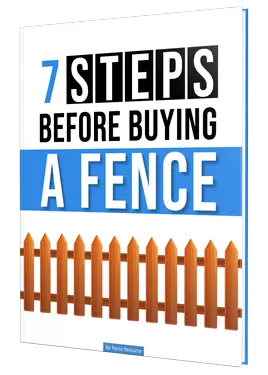Even the flattest of yards have a change in grade or elevation. However, some yards have more than others. Homes built on the side of hills won’t have much flat space if any. When this is the case, you will have to build a fence on a slope.
Seems simple enough. Although, two major factors come into play when building a fence on a slope. The first is just how steep the slope is. The second is the fence material.
In this article, we’ll discuss the challenges involved with fence on a slope. We’ll review the two best approaches for installation. And last, we will discuss how different types of fence work better on slopes based on materials and design.
Installation is a Challenge
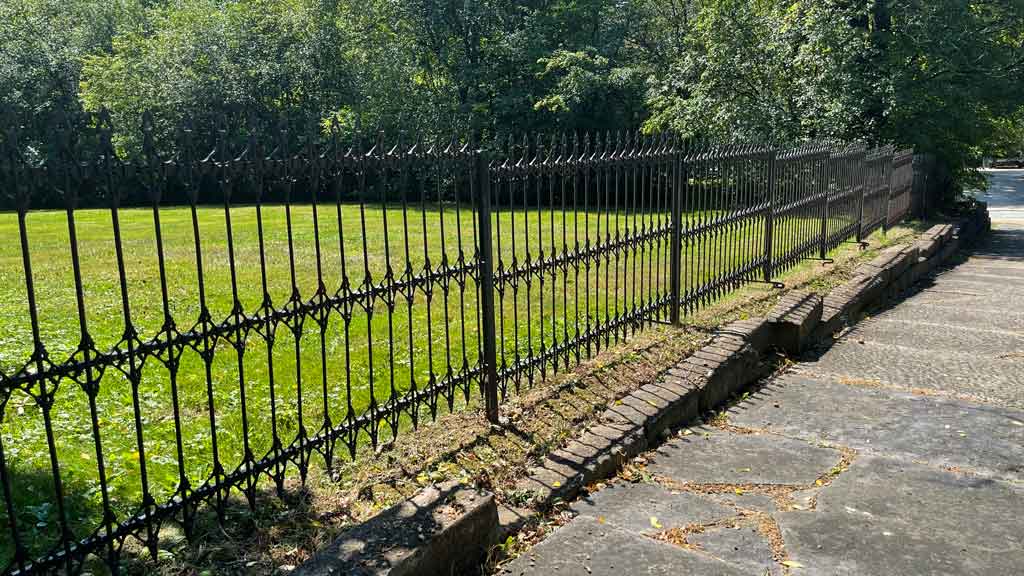
There are many challenges when installing fence on a slope. Some styles of fence will follow the slope without a problem. Others styles have to hang level or square. As a result, they cannot angle upwards or downwards.
Therefore, choosing one type of fence over another will have advantages. When the fence is for containing small pets, it is crucial that there aren’t any large gaps under it. When the fence is purely for privacy, gaps under the fence aren’t as crucial.
Furthermore, the angle of the slope provides its own challenges. Just getting materials to steep slopes is a challenge. Especially when wheeling wheel barrows full of concrete.
The Two Best Approaches
There are two common methods for installing a fence on a slope. The reason or purpose for the fence will dictate the best method for you. Personal style and taste may also determine what method to use.
However, the style and material also dictate installation methods. So you may not have a choice. Be sure to check with the manufacturer or your fence professional before purchasing materials. Make sure the style selected will work for your application.
Racked Fence on a Slope
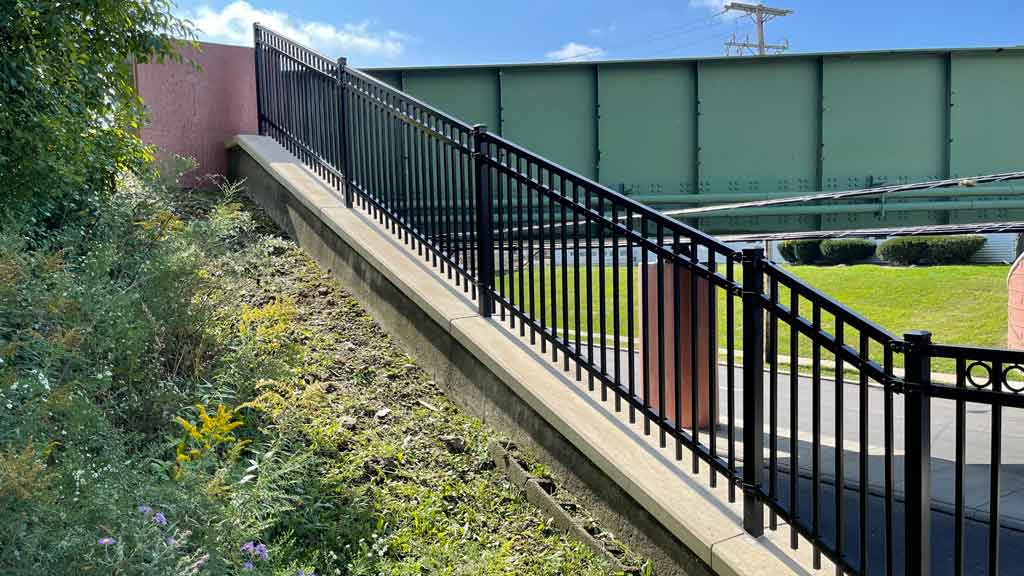
Fence that racks or rakes, angles or pivots to accommodate slopes. It does not have to hang level. However, even rackable fence sections will have their limits.
The amount of drop or rise each section will rack varies by style and manufacture. Therefore, knowing the amount of rack required is key.
Most fence manufactures measure rackability over the same length the fence section measures. Therefore, if the section of fence is 8′ wide, they will provide a measurement of how many inches the section rakes over 8′.
Measuring the amount of rake needed for your own installation is easy. All you need is a 2x4x8, a level and a measuring tape. Then simply lay the 2×4 on the ground and raise it from the low side of the slope until it reads level. Then measure the distance between the bottom of the 2×4 and the ground.
The measured amount is the drop over 8′. In order to convert that measurement to a drop per foot, simply divide the measurement by 8.
Stepped Fence on a Slope
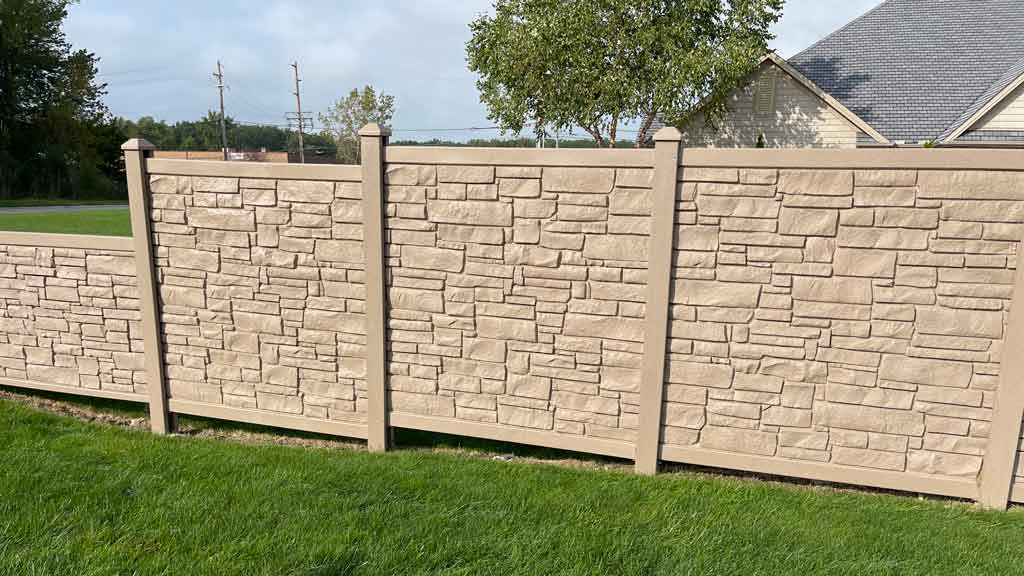
Fence that steps on a slope has a terraced effect. Each fence section starts at the ground level of the slope and hangs level from there. As a result, creating a triangular gap under each section or panel. The amount of space under the fence is determine by how steep the slope is.
Longer posts are necassary when stepping fence on a slope. As a result of the fence section running level from the high side of the slope, the low side post needs to be longer to accommodate the difference in drop.
Therefore, stepping is not ideal when containment is a priority. However, when maximum privacy is a priority, stepping a fence on a slope offers more height than fence that is racked.
Check local building codes in regards to height restrictions. Stepping the fence increases the overall height when measured from finished grade. Some building or zoning departments will not approve the fence if it reaches a height over what is permitted.
How Material Types Effects Installation
The type of material and style of fence effects what method of installing a fence on a slope is available. You may have your heart set on one method. However, the type of fence you choose may mandate another.
Below we’ll do a quick review on popular fence types and styles. However, it is wise to check with your fence manufacture or fence installation company to make sure your fence works for your application.
Wood Fence on a Slope
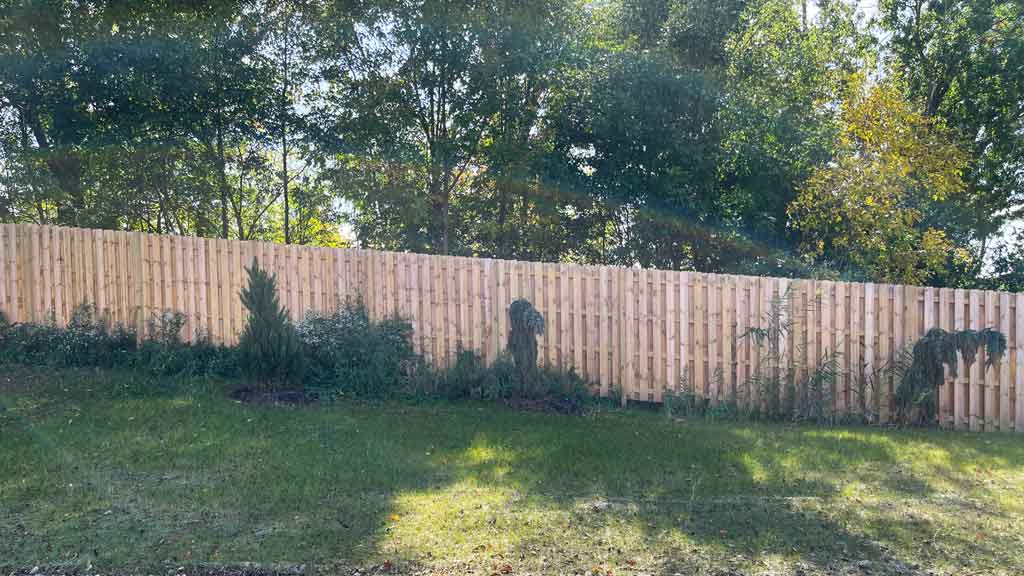
Wood fence falls into two categories. Stick built and pre-made sections and panels. Each method is different in what it can offer when installed on a slope.
Stick built wood fence means that each horizontal rail or stringer and each vertical picket is attached one at a time. Stick built fence allows for installation using both methods. It really will come down to function, purpose and personal style.
Pre-made panels are not as accommodating. Some of the lesser quality panels found at big box stores can rack slightly. However, most don’t. As a result, they must be install level. Therefore, pre-made fence sections on a slope will have to step. This requires longer posts.
The style of wood fence doesn’t matter. From picket fence to privacy fence, the deciding factor is if it is stick built or comes in sections.
Vinyl Fence on a Slope
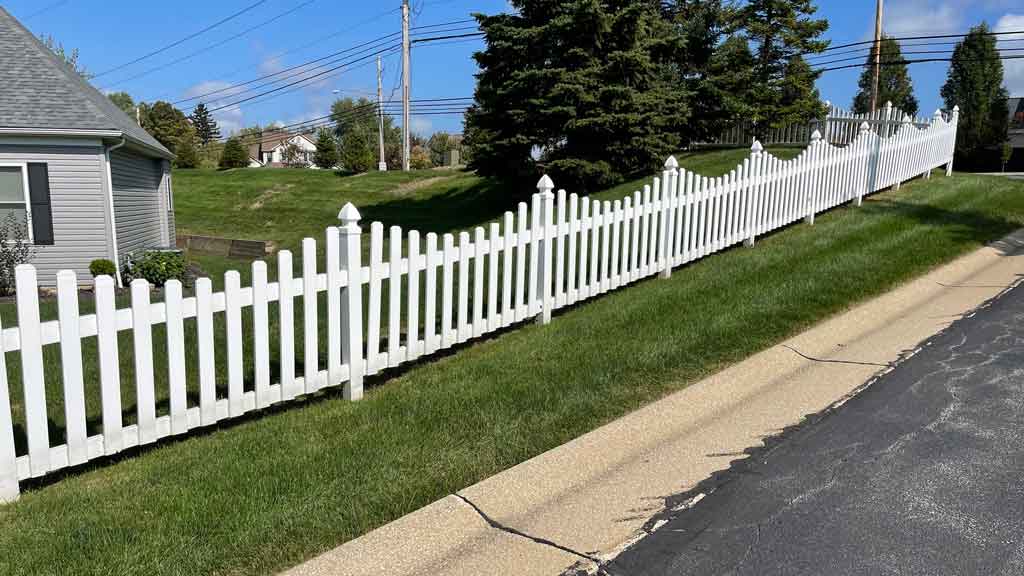
Most vinyl fence sections come preassemble or as kits. They will be rackable to a certain degree unless glued together. However, certain styles will rack more than others.
Vinyl picket style fence will rack more than vinyl privacy style fence. Although most vinyl privacy fence will rack somewhat. However, vinyl privacy fence with lattice accents do not do well on slopes.
Lattice sheets install square to the posts. On steep slopes, it will have to be cut to fit correctly. Many times it won’t work at all.
A problem with stepping vinyl fence on a slope is that the post come pre-routed from the manufacturer. This means that some in the field routing will be required unless a bracket system is used.
Ornamental Aluminum Fence on a Slope
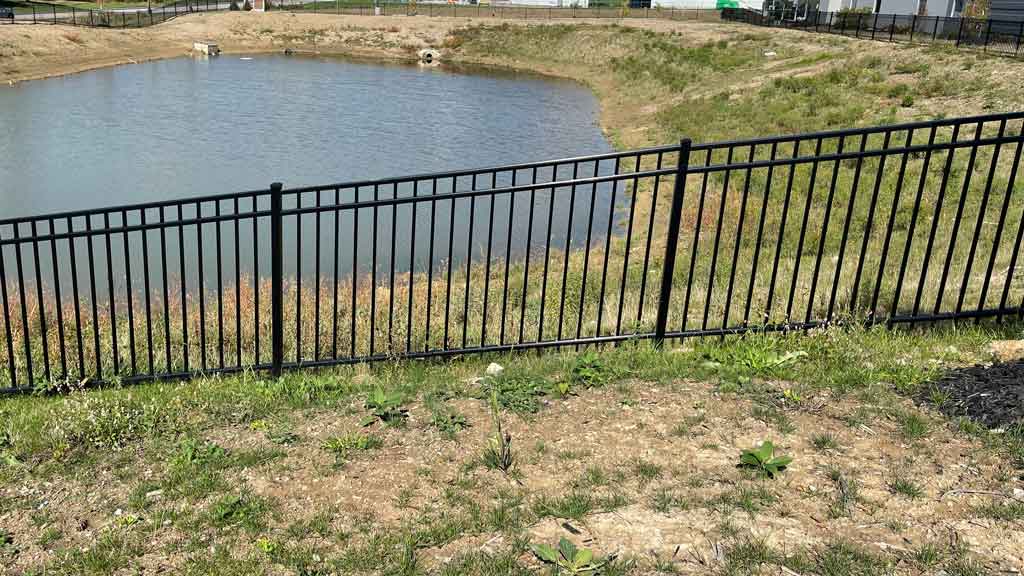
The design of ornamental aluminum fence allows it to easily rack. Furthermore, some manufactures even offer double punched rackable sections that will accommodate even the steepest slopes. However, you can also install aluminum fence using the stepped method if so desired.
Chain Link Fence on a Slope
Chain link fence flows nicely over uneven terrain and up and down slopes. A special cut called a bias cut is required in order to keep the wire mesh on a chain link fence tight when installed on a slope.
Extra terminal posts will also be required at breakpoints and grade changes.
To learn more on How to Install a Gate on a Slope, CLICK HERE

